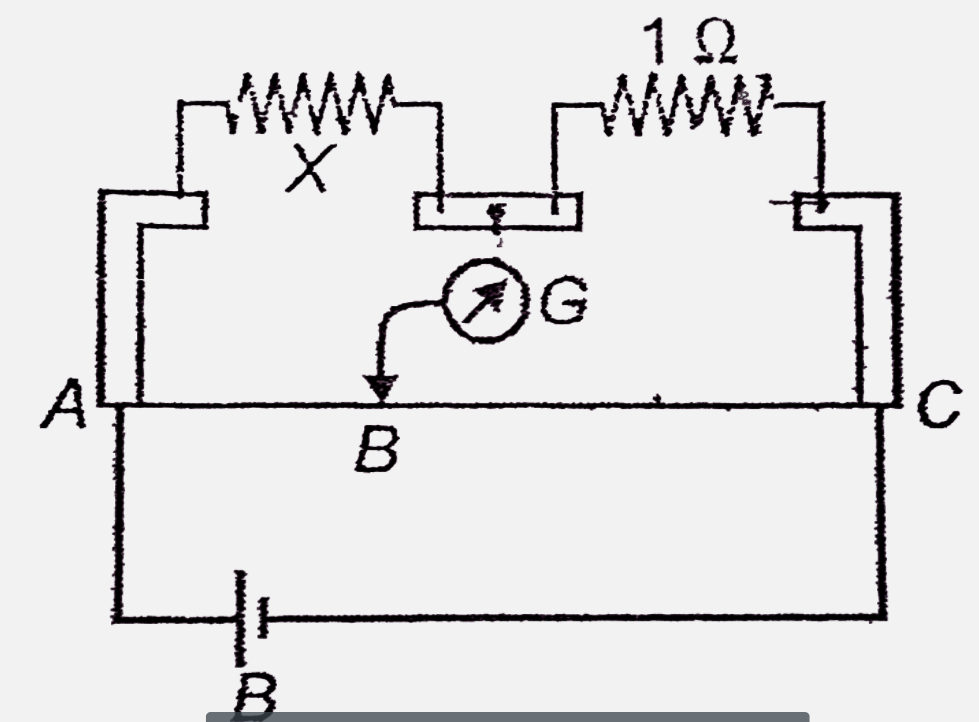Figure shows an experimental set up to find the value of an unknown resistance (Rx) using a meter bridge. AB is the uniform meter bridge wire of length L=100cm. When the sliding jockey is placed at J(AJ=x), the galvanometer shows zero deflection. AJ=x is known as balancing length and is measured using a scale having 1 mm as least count.
(a) In one experiment known resistance R was taken to be 20Ω and balancing length was measured as x=(20.0±0.1)cm. find the value of Rx.
(b) Show that fractional error in calculated value of Rx is least when x=L2. What shall we do to ensure that x is close to L/2 ?

The correct Answer is:(a) (5.00±0.03)Ω
Topper's Solved these Questions
Similar Questions
In the circuit, given figure below the length of the wire AB = 400 cm. Where should the jockey J be placed, so that the galvanometer shows a zero deflection?
View SolutionIn the circuit shown, the length of AB is 100 cm. The lengthj1 for which the galvanometer shows zero deflection is __________ cm.

View Solution
Knowledge Check
What is the value of unknown resistance R, if galvonometer shows null deflection in the given meter bridge set up?
 A97.50ΩB105ΩC150ΩD110Ω
A97.50ΩB105ΩC150ΩD110ΩWhat is the value of unknown resistance R, if galvonometer shows null delection in the given meter bridge shows null deflection in the given meter bridge set up?
 A97.50ΩB105ΩC150ΩD110Ω
A97.50ΩB105ΩC150ΩD110ΩThe potentiometer wire AB shown in figure is 50cm long.When AD=30cm, no deflection occurs in the galvanmeter.Find R.
 A1ΩB2ΩC3ΩD4Ω
A1ΩB2ΩC3ΩD4Ω
In the circuit shown, the length of AB is 100 cm. The lengthj1 for which the galvanometer shows zero deflection is __________ cm.

View SolutionIn the metre bridge, the balancing length AB =l=20 cm. The unknown resistance X is equal to

View SolutionThere is an unknown quantity x=Rl100−l, here l is length (in cm) measured using a scale having least count of 1 cm and R is a quantity known accurately. Find the percentage error in measurement of x for l=50cm?
View SolutionThere is an unknown quantity x=Rl100−l, here l is length (in cm) measured using a scale having least count of 1 cm and R is a quantity known accurately. Find the percentage error in measurement of x for l=50cm?
View SolutionThere is an unknown quantity x=Rl100−l, here l is length (in cm) measured using a scale having least count of 1 cm and R is a quantity known accurately. Find the percentage error in measurement of x for l=50cm?
View Solution
